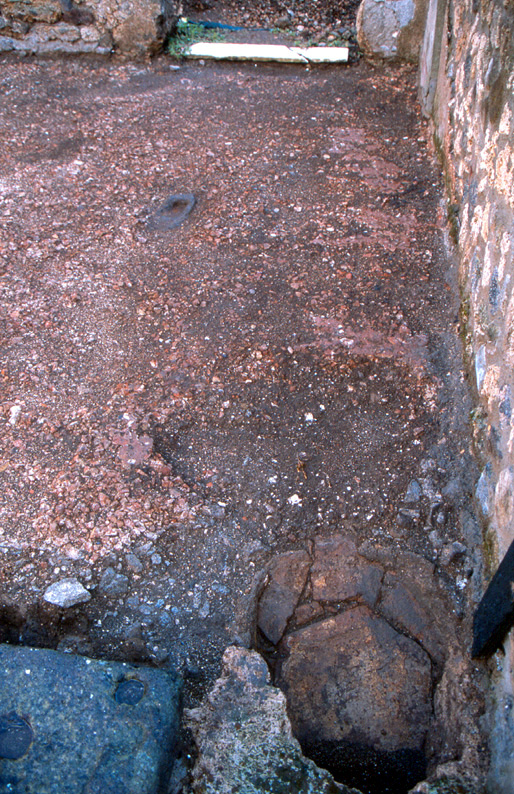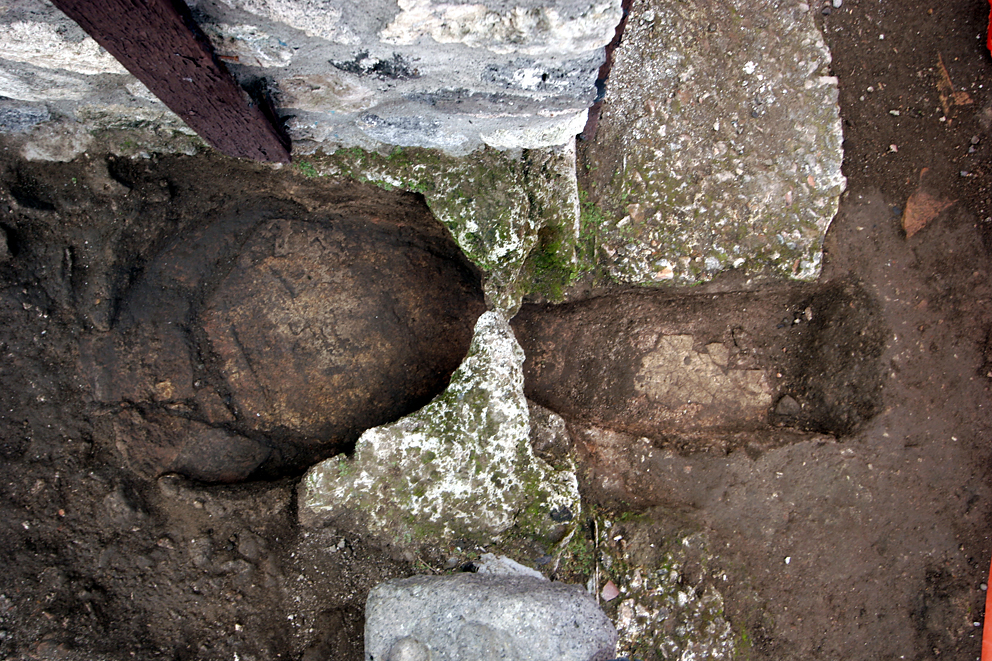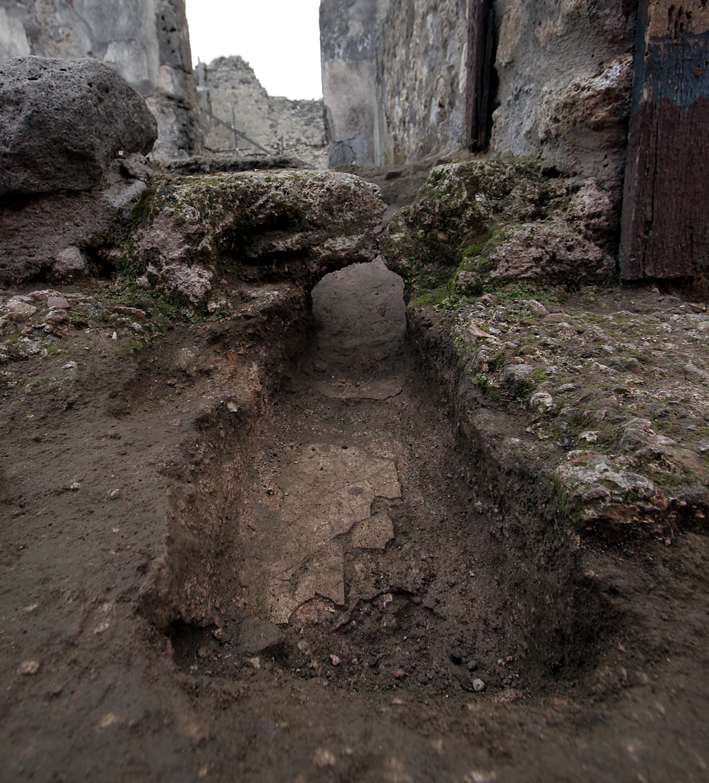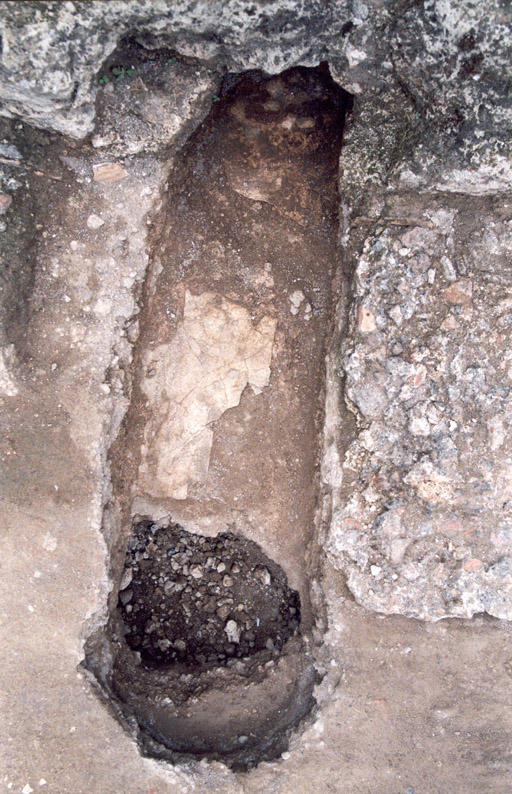Water conduits (constructed)
Description
Henrik Boman & Monika Nilsson
In the SW corner of room 14i, an installation is sunken into the cocciopesto floor. The installation is constructed in brick and limestone, sunken into the floor and equipped with a conduit to a cesspit located in the sidewalk. The cesspit has not been excavated.
Around the eastern end, smaller pieces of cut brick and mortar create a sloping, rounded floor of the installation. The bottom of the installation is of brick/tile, cut to fit the construction. The floor around the installation is destroyed, and the sides of the installation could therefore have been higher originally. There are no traces of any superstructure above the installation, neither wall nor other feature.
The conduit under the threshold is constructed by a horseshoe-shaped block of limestone, partly cut to retract from the line of the western wall. The limestone has traces of plaster, presumably from the façade decoration. The lava threshold does not extend over this area.
The installation is presumably designed to collect waste water from the floor and lead it to the cesspit under the pavement. The old excavation report mentions a simple table at the S wall. This table could be connected to the installation in the floor, though we cannot draw any positive conclusions at this moment.
The floor around the installation is destroyed and we cannot from the remains today say whether this is an original installation or not. Though, concerning the 3rd style painting on the S wall and the assumption that the room originally was a triclinium, we can assume that the installation was made later. The floor ought to be the original, as we see it today (2005), and it is most likely that the floor had been cut open for the installation. The argument is based on the social status and function of the decorated room, rebuilt into a taberna.
The installation is 0.46 m wide (NS), c. 0.7 m in length (EW). The opening in the conduit into the pavement is c. 0.17 m wide.




